Matcha is one of my very favorite ingredients that I am continuously inspired by in my kitchen adventures! From matcha milk bread turtles to matcha cheesecake brownies, matcha recipes are the most popular posts on ful-filled! But my relationship with matcha did not start in the kitchen, in fact, it started 18 years ago, when I was just 15 years old and I tasted my first sip of a matcha latte. From that day forward matcha became a part of my life. You know the way some people (many people) feel about coffee, how they look forward to a cup the moment they rise…well, that is what matcha is to me and my hubby. Which is why I am so excited to share this comprehensive blog post all about matcha, a complete guide from what it is, how to select it, how to prepare it, and some of my favorite recipes!
THE GREEN TEA THAT CAN CHANGE YOUR LIFE
Matcha is the ‘new’ trend making waves in the food world for its incredible health benefits and its delicious flavor, but this ancient drink has been enhancing lives in Japan for over 1000 years, where it is revered for its mental & medical remedies. It may have taken a while, but the power of matcha is finally becoming known all across the world and is changing the way people fuel their lives.
WHAT IS MATCHA?
Matcha is a fine powder of ground whole green tea leaves. Unique from other teas, it is the only tea where the entire leaf is consumed. Only the strongest growing green tea leaves are selected for matcha production. They are then shade grown for the last three weeks before harvesting and the stems are removed before the leaves are ground into a fine powder. Matcha is traditionally prepared by whisking a scoop of powder with hot water until frothy. Smooth and vegetal with a pleasant nutty bittterness, matcha has a grassy and sweet flavor.
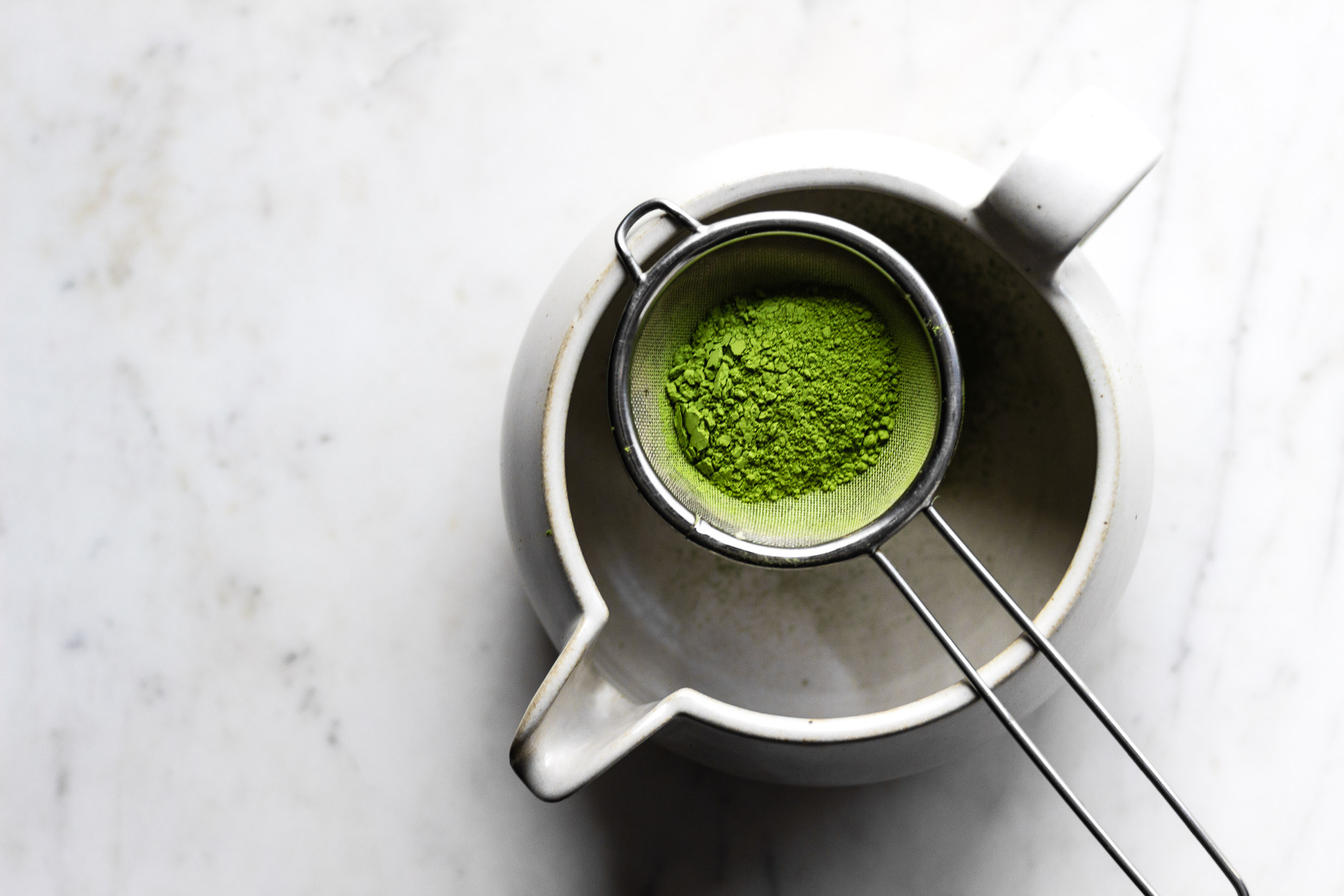
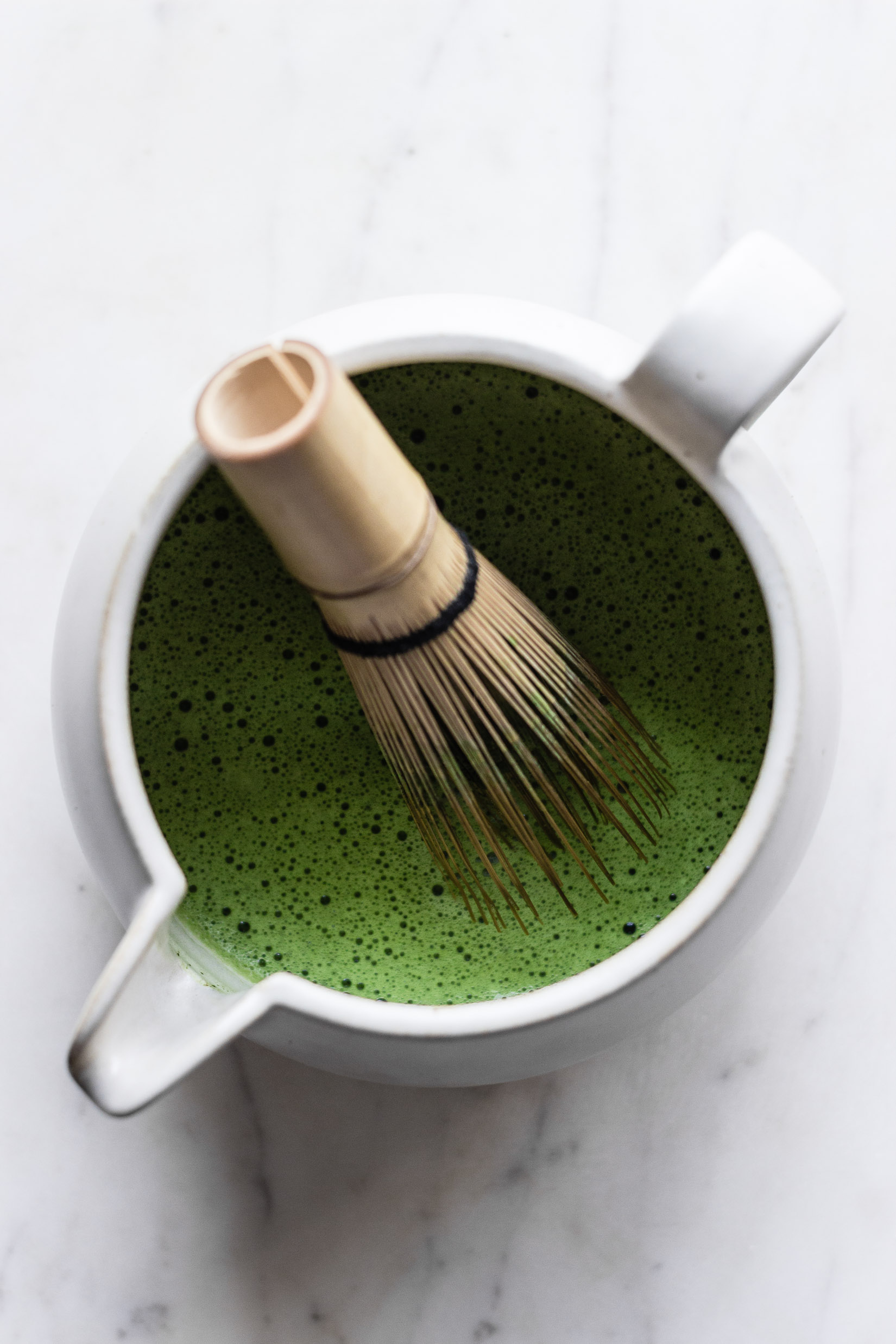
MATCHA BENEFITS:
Before tea was considered a casual beverage, it was considered a medicine. Of all the teas on earth, matcha is the ultimate medicine.
ANTIOXIDANT POWERHOUSE
-Matcha is the highest source of antioxidants per gram (ORAC=1573) with the next highest source being goji berries (ORAC=253).
-One serving of matcha has the equivalent amount of antioxidants contained in 10 cups of normal brewed green tea
-Matcha is bursting with catechins, particularly EGCG, which is the most potent & beneficial antioxidant- known to prevent cancer & heart disease and is effective in reducing inflammation & slowing cartilage breakdown
ALKALIZING & DETOXIFYING
-With its incredibly high levels of chlorophyll, matcha provides oxygen to the tissues, detoxifying & creating a healthy alkaline pH in the body
STIMULATES METABOLISM & BURNS FAT
-The catechin EGCG in matcha has been found to raise the body’s thermogenesis (the body’s own rate of burning calories) from 8-10% of daily expenditure to between 35-43% of daily expenditure
-At the same time it oxidates fat & limits intestinal absorption of fat, all while not raising blood pressure or heart rate
PROTECTS SKIN
-EGCG is proven to fight skin aging, reduce inflammation caused by UV radiation & suppress acne
INCREASES FOCUS & CALMS MIND
-The shade growing of matcha elevates the L-theanine content, an amino acid that induces alpha frequency brain waves, resulting in mental calmness, improved concentration & memory, and relaxed alertness
ENERGY BOOSTING
-It naturally contains only 1/2 the caffeine of coffee
-The unique properties of matcha result in a calm energy that lasts for 5.5 hours on average, with no jitters, crash, or nervous energy
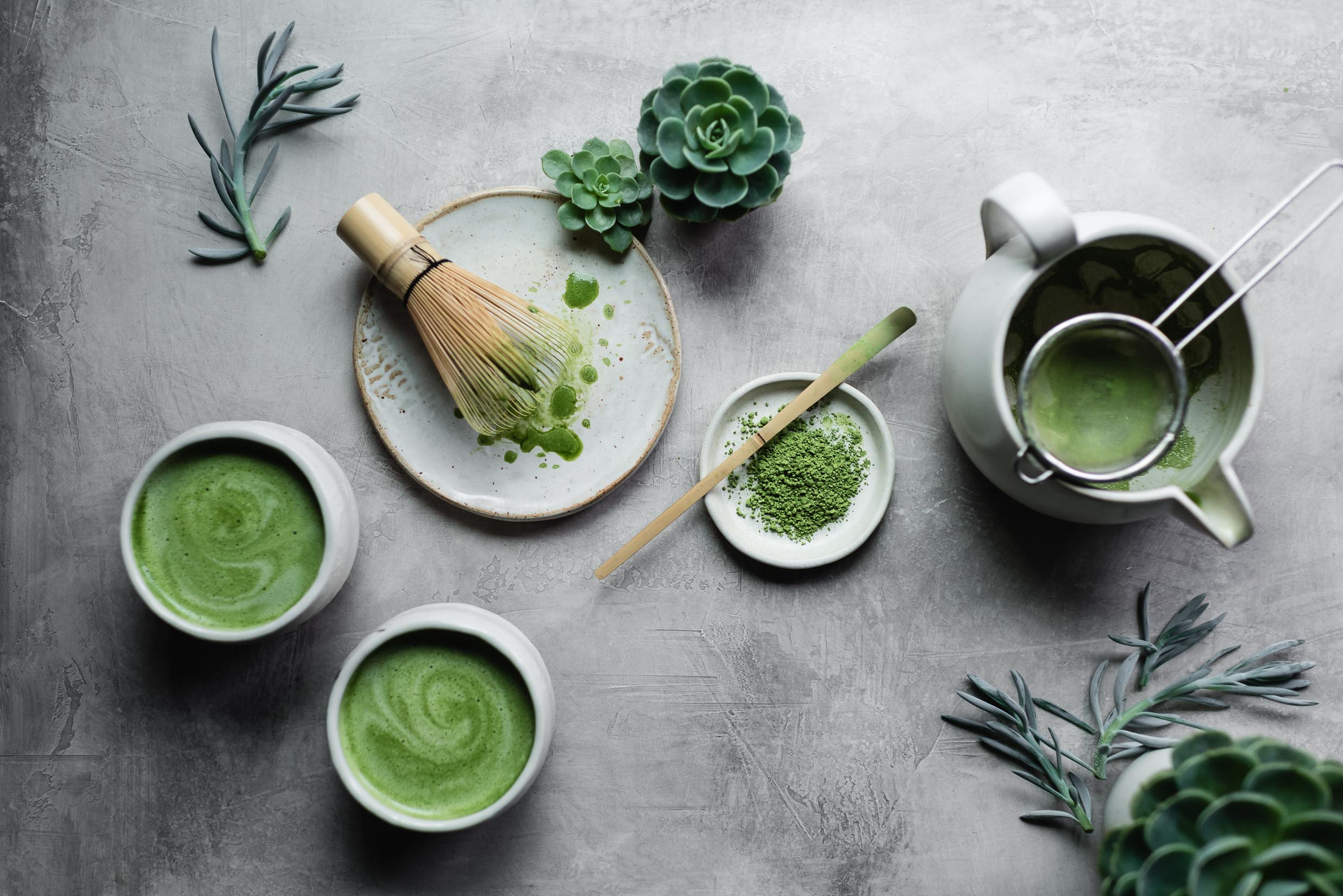
MATCHA TESTIMONIALS:
For me, matcha has always been so much more than a trend, it is a lifestyle. I have shared my passion for this drink with many, many people because I believe that the benefits of matcha are powerful, and for some life-changing. I asked some of the people that I have recommended matcha to if they would be willing to share how making matcha a part of their life changed their health and well being, here is what they had to share:
“Before switching to matcha, I drank strong, black coffee, 20 oz/day. My reason for switching was increasing problems with indigestion/acid stomach, and a pervasive, edgy feeling produced by coffee’s high caffeine content. I have mild adult ADHD, and caffeine helps my mind focus and reduces distraction so I did not want to abstain from caffeine, but the effects of coffee were becoming oppressive. The caffeine/theanine combination in matcha has been a great solution. Now I don’t have indigestion/stomach acid problems, so I can eat foods that I love but once avoided because of stomach pain. Reducing my caffeine intake did result in withdrawal symptoms (headaches) which took some time to subside, but the result has been well worth it. I have not drunk coffee in over 1 1/2 years and I can’t see myself going back to it” – Greg
“My husband and I started drinking matcha 2.5 years ago and it has been quite a game changer for both of us.
My husband was an avid energy drink consumer, he would typically have one in the morning and another in the early afternoon to keep him going. He also suffered terribly from Acid Reflux, and skin irritation. After making the transition to Matcha he immediately noticed that his Acid Reflux diminished, and then completely went away, and after a month or so his skin had really cleared up. In addition, he no longer needed that energy drink in the afternoon; the slow release of the caffeine from the matcha was enough to keep him going all day. He enjoys his matcha in a shaker bottle mixed with 16 oz of cold water, 2 TBS of agave, and 4-6 oz of unsweetened almond milk.
I on the other hand was not drinking any sort of caffeine when we started drinking matcha, I was nursing our 4-month old son at the time and didn’t want to put any caffeine in his system; however, with the sleepless nights, and working full time I was really struggling. I started drinking matcha tea, and I would only drink 1/2 a tsp. mixed with almond milk and honey for a delicious latte. I am SUPER sensitive to caffeine, and I love coffee, but a single cup is enough to get my hands shaking and my heart pounding. Matcha has never done that for me, when I first started drinking it, it simply helped clear my mind of the foggy mommy brain. I experienced no negative effects from the caffeine, and didn’t notice any change in my little one. When I stopped nursing I increased my matcha intake to a full serving and still thoroughly enjoy my latte every morning.
Matcha has been a delicious and healthy addition to our life. While we each like it in our own way, neither of us would want to go back to life without it!” – Aubree
“I was going through about 4-5 cups of black coffee daily before I tried matcha. It had gotten to the point where the caffeine had little to no effect on me, however, a day without it meant I’d stay in bed until noon with a monstrous headache. I was tired all the time and either unable to sleep at night, or I could sleep all night and well into the afternoon the next day. No matter what, I was exhausted. This was also around the same time I had learned that I was suffering from extreme adrenal fatigue and was desperately looking ways to balance myself (coffee definitely exacerbates the symptoms). My friend Bella was kind enough to send me some matcha to use as a way to ease myself off of caffeine and though it wasn’t easy, I jumped at the chance to alleviate some of my symptoms. My withdrawals lasted about two months (headaches, extreme fatigue) but quitting coffee was definitely worth it long term. I don’t feel exhausted throughout the day and fall asleep easier most nights. I haven’t had coffee for nine months and while some days I’ll have matcha or other teas, most days I find I don’t need anything at all!” – Christine
MORE THAN A DRINK
With such a vast array of physical & mental benefits, matcha is so much more than a drink. Matcha is a way of living. It nurtures the body & calms the mind- a retreat from the hectic, grounding us in the midst of our over-stimulated modern lives. Energizing yet relaxing, nourishing & protecting, matcha is the drink that keeps on giving.
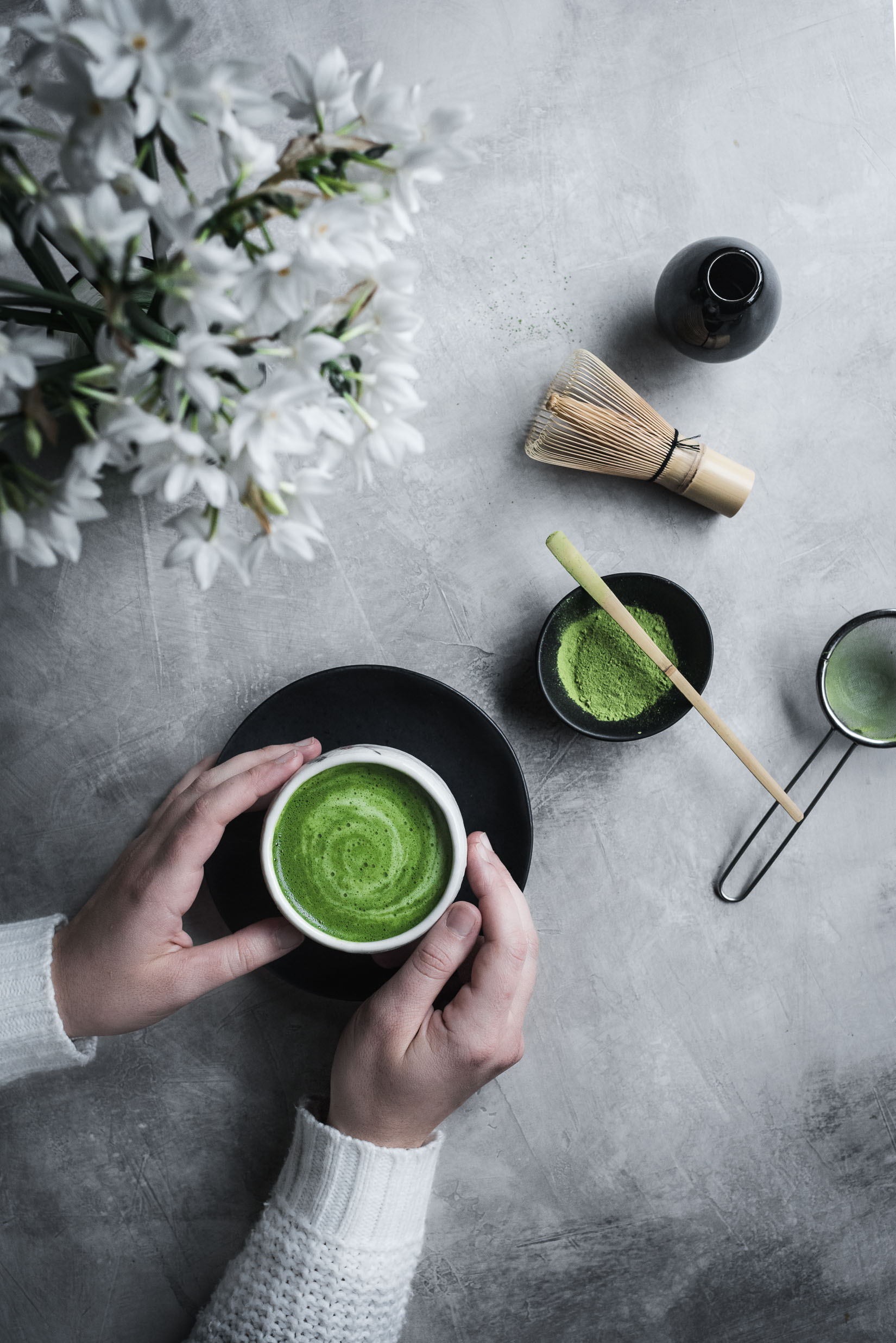
HOW TO SELECT & PREPARE MATCHA
- SELECTING MATCHA
-We choose matcha that is organically grown in Uji, Kyoto, Japan. Out of all of the brands we have tried over the years, we love Encha the most because it is consistent in quality, superior in flavor, and offers three grades of matcha all at a great value. Their matcha goes through extensive testing for quality (you can read all the details here) and they have excellent customer service. Encha also happens to be available on Amazon Prime here in the U.S. and can ship worldwide through their site at Encha.com. Here are the main factors to consider when choosing quality matcha- VIBRANT HUE: quality matcha should be a beautiful vibrant green, matcha oxidizes when exposed to air, turning an unpleasant brown shade, so purchasing matcha direct from the farm that packages it is best
- SMOOTH SWEET FLAVOR: matcha should taste grassy and sweet, with a pleasant, non-astringent bitterness that is smooth and vegetal
- JAPANESE MATCHA vs. CHINESE MATCHA: generally speaking, “matcha” is not shade grown in China, which leads to a dull and bitter “matcha” product. In Japan, matcha is shade grown, which produces the most vibrant, best tasting matcha.
-
WHY WE CHOOSE ORGANIC MATCHA
-The reason is very simple, tea leaves have no protection. Since matcha is made from ground de-stemmed green tea leaves, we don’t want to ingest any harmful residues from pesticides and synthetic chemical fertilizers which are used in conventional farming. Less than 1% of teas sold in the U.S. are organic, so the more we support organic farmers, the stronger signal we are sending to other farmers and the entire world to go organic. (you can learn more about the Encha farm here)
- WHICH GRADE TO CHOOSE
-There are typically 2 grades of matcha to choose from: ceremonial & culinary. The main difference from one grade to the next is harvest time. Encha has 3 grades to choose from. Here is a general guide:- CEREMONIAL: Premium 1st harvest in May – very smooth, grassy & delicate – best for traditional matcha preparation
- LATTE GRADE: 1st harvest in May – smooth & mildly grassy – best for lattes (matcha with milk and/or sweetener added)
- CULINARY: 2nd harvest in June – moderately grassy, bitter – best for baking & smoothies
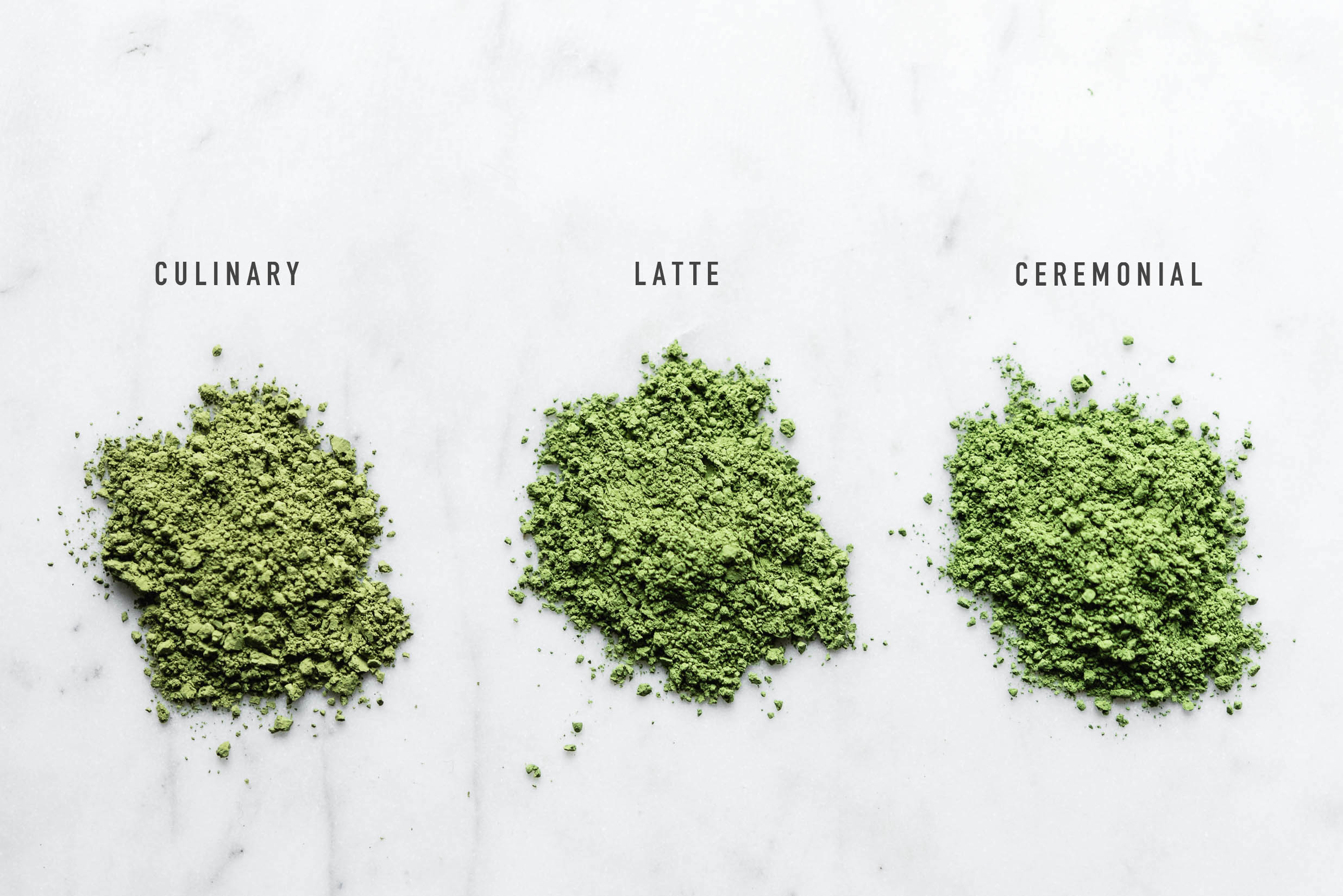
- HOW TO PREPARE IT
-Matcha can be used in all kinds of applications, but when it comes to drinking, there are two primary ways it is typically drinken:- Ceremonial: 1 tsp ceremonial grade matcha + 8 oz hot (not boiling, water)
- Latte: 1 tsp latte grade matcha + 2 oz hot (not boiling, water) + 6 oz. steamed milk of choice + 1-2 tsp sweetener of choice
- WHICH MILK IS BEST?
-We have found that our favorite milks for making matcha lattes are non-dairy, our top choices are:- Soy milk (our favorite is Whole Foods 365 Organic Unsweetened)
- Almond milk (our favorite is Whole Foods 365 Organic Unsweetened)
- Macadamia milk (our favorite is Milkadamia)
- Oat milk (our favorite is Oatly)
- WHICH SWEETENER IS BEST?
-While many people enjoy a ceremonial style matcha with no sweetener added, my hubby and I absolutely love matcha lattes that are gently sweetened. The possibilities are really quite endless when it comes to flavoring & sweetening your matcha latte, but here are our top choices for sweeteners:- Monkfruit sugar (makes a great no-sugar latte)
- Palm sugar syrup (we love to make our own infused with Pandan)
- Honey (we enjoy the raw, unfiltered kind)
- Date Syrup (we love Just Date Syrup)
- WHAT TOOLS DO YOU NEED?
-There are many ways to prepare matcha, but the following tools are what we use to make the best matcha drinks:- Traditional bamboo whisk & holder – using a bamboo whisk produces the smoothest matcha – a holder helps the whisk keep its shape
- Fine sieve & bamboo scoop – we use a traditional bamboo scoop to portion our matcha & sift it through a fine sieve before whisking with hot water (sifting ensures there will be no clumps of matcha)
- Wide matcha bowl or mug – you want to use a bowl or mug that is at least 3.5″-4″ in diameter to allow for optimal whisking action
- Aerolatte or milk frother – while not necessary, frothing your hot milk with an Aerolatte or milk frother will allow you to create cafe style lattes at home
- HOW TO STORE MATCHA:
-As I mentioned earlier, matcha will oxidize and spoil if exposed to air, so it is best to store it in an airtight package or container in the refrigerator. Unopened, a package will last about one year if stored in the refrigerator. If you have matcha that has ‘expired‘ I would recommend using it in smoothies or baking with it. Once opened, matcha should ideally be used up within 1 – 2 months to ensure optimum freshness, color, and taste.
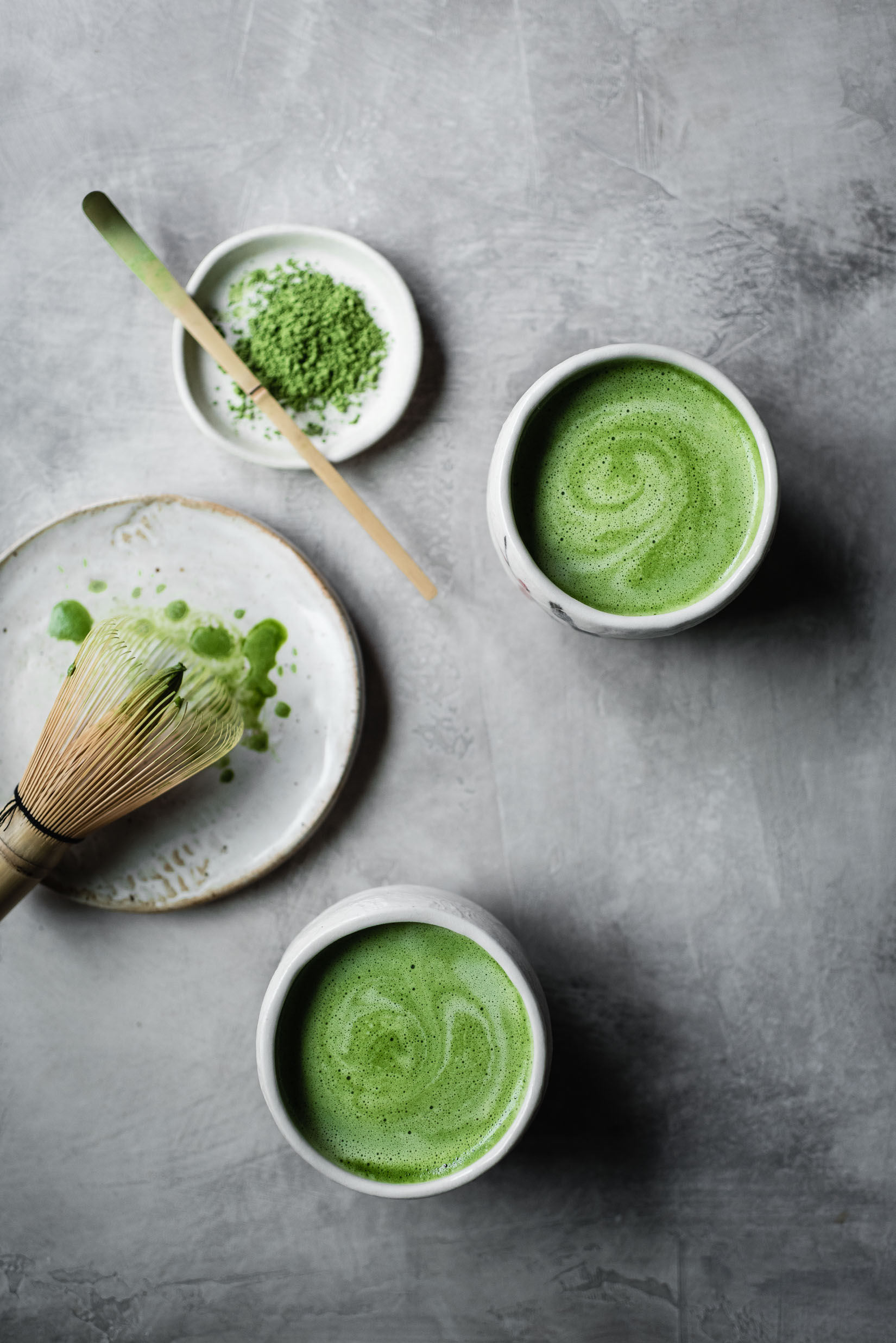
MY BEST MATCHA RECIPES
-
MATCHA CHEESECAKE BROWNIES
-
DAIRY-FREE PISTACHIO ICE CREAM (naturally colored with matcha!)
-
MATCHA MILK BREAD TURTLES WITH CHOCOLATE DUTCH CRUNCH
In closing, I wanted to leave you guys with our basic recipe for making an incredible matcha latte. This recipe has converted many people who were either on the fence about matcha or flat out hated matcha into matcha lovers!
P.S. If you have a questions about matcha that I did not cover, just let me know in the comments and I will be sure to answer you!
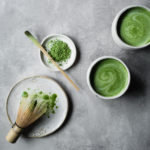
MATCHA LATTE
- Total Time: 5 minutes
- Yield: 1 latte 1x
Ingredients
- 1 tsp Encha latte grade matcha (or ceremonial grade, if you are feeling extra special)
- 2 oz. hot, not boiling water
- 6 oz. steamed milk
- 1–2 tsp sweetener of your choice
Instructions
- Heat filtered water in a kettle until just before boiling. Turn off heat and let kettle sit while you prepare the rest of your ingredients
- Heat 6 oz. of milk in a small saucepan until hot, but not boiling ( you can also use the microwave, a stovetop steamer, or a milk frother like an Aerocino)
- In a wide mouthed mug or matcha bowl, sift 1 tsp. of matcha through a fine sieve into mug or bowl
- Pour 2 oz. of hot water over matcha, use bamboo whisk in a zig zag motion to whisk the matcha until smooth and frothy, approximately 10-15 seconds
- Add sweetener of choice to whisked matcha and stir to combine
- At this point you can froth your heated milk if you did not use a milk frother or stovetop steamer
- Pour prepared milk into matcha and enjoy :)
- Prep Time: 0 hours
- Cook Time: 0 hours
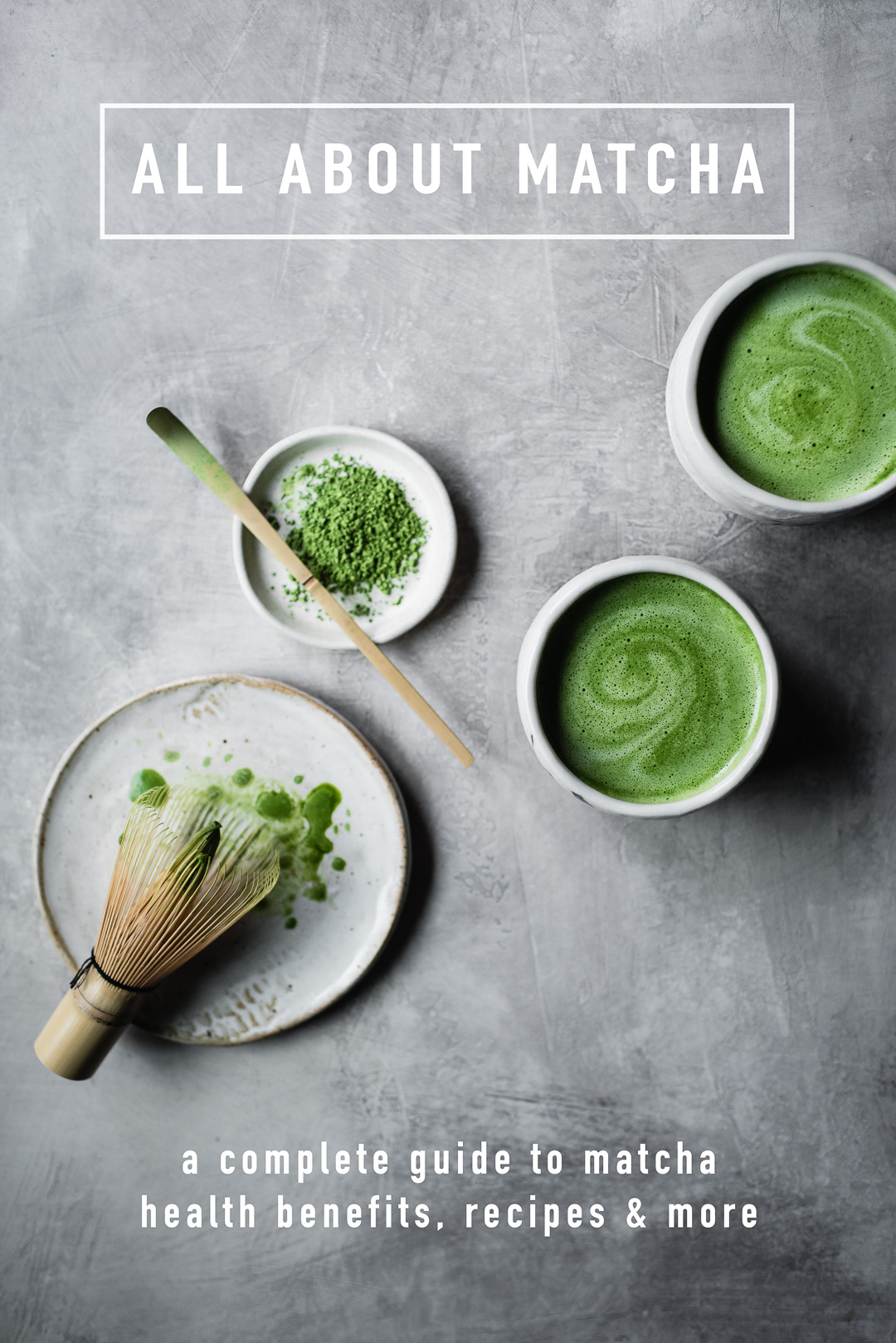
Next post: CANDIED CITRUS YOGURT TART
Previous post: VEGETABLE LASAGNA SOUP

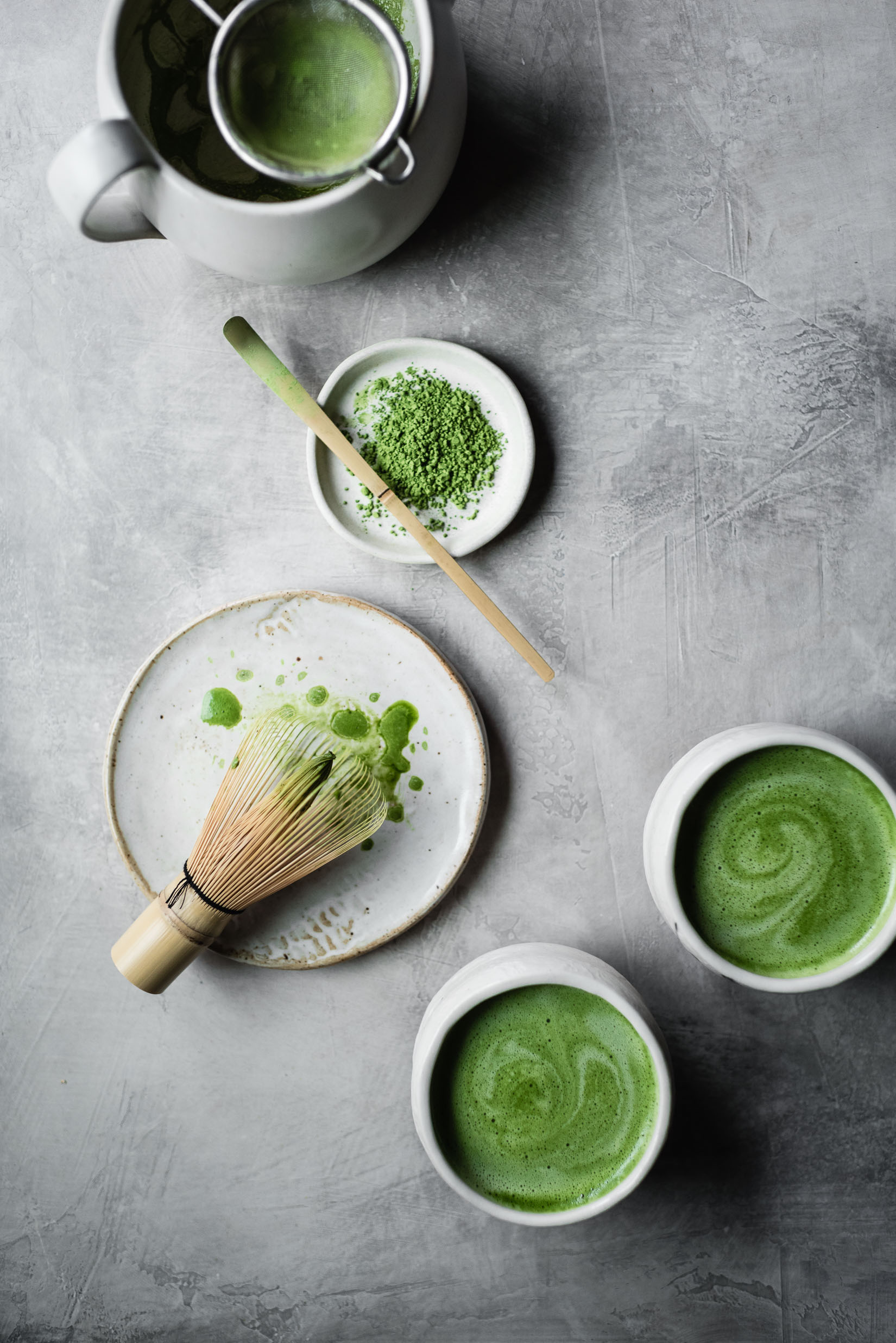
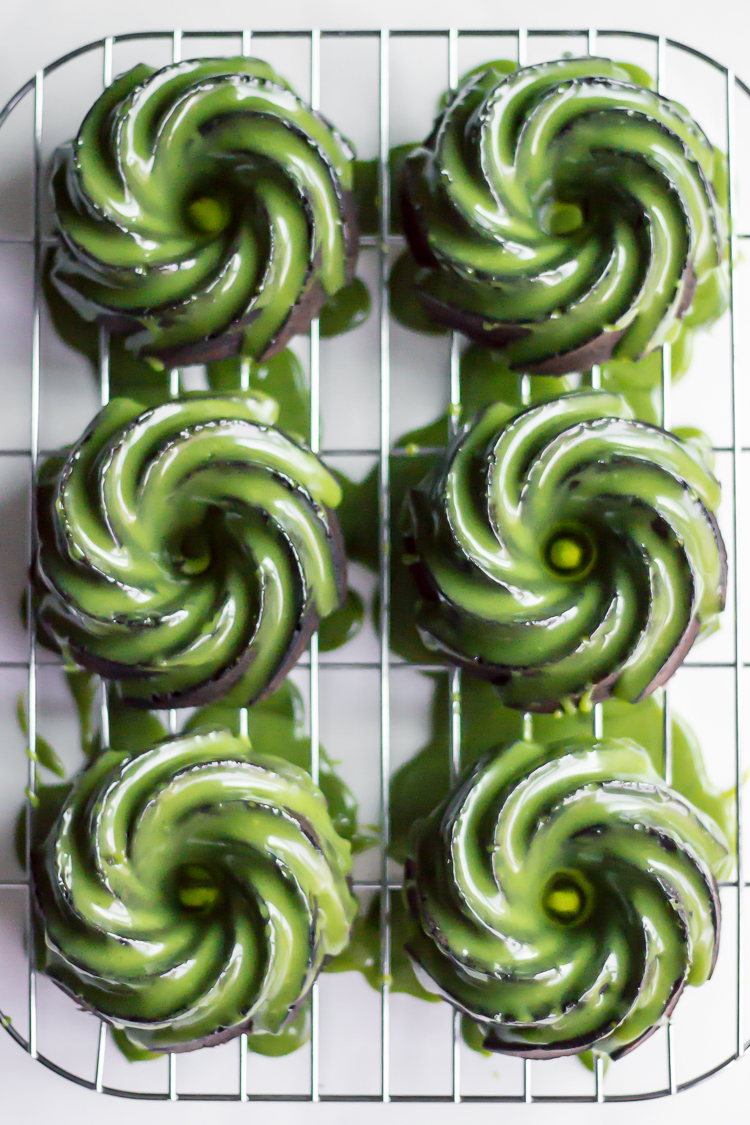
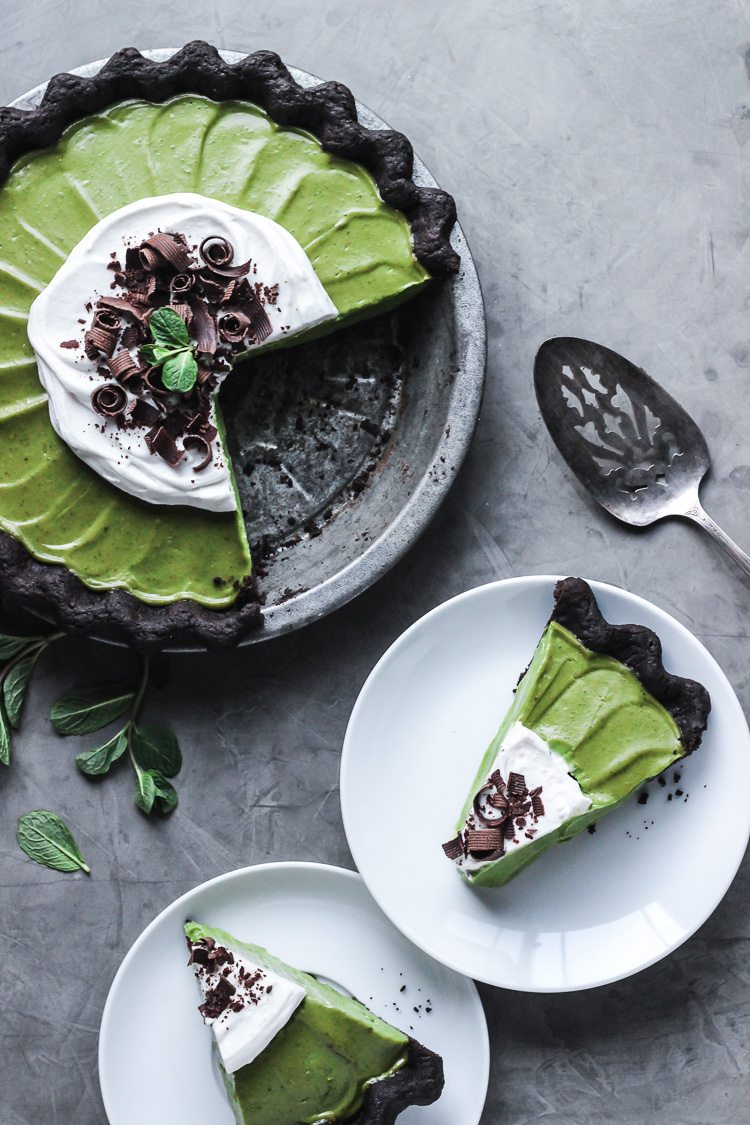


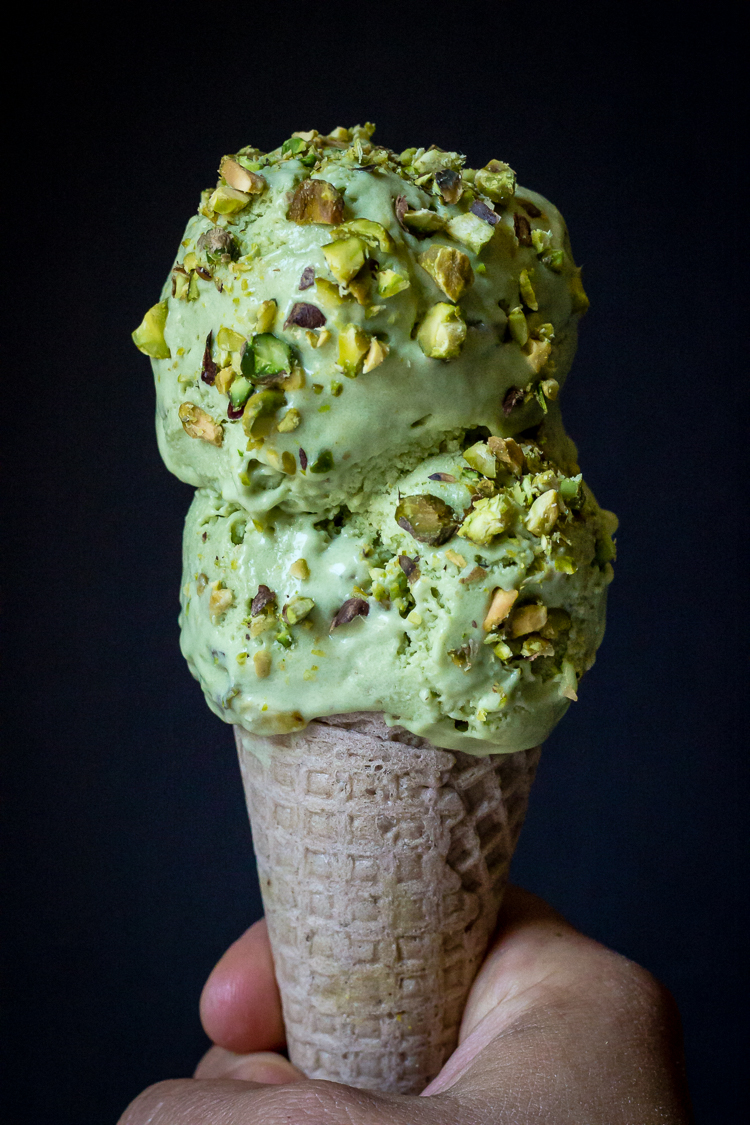
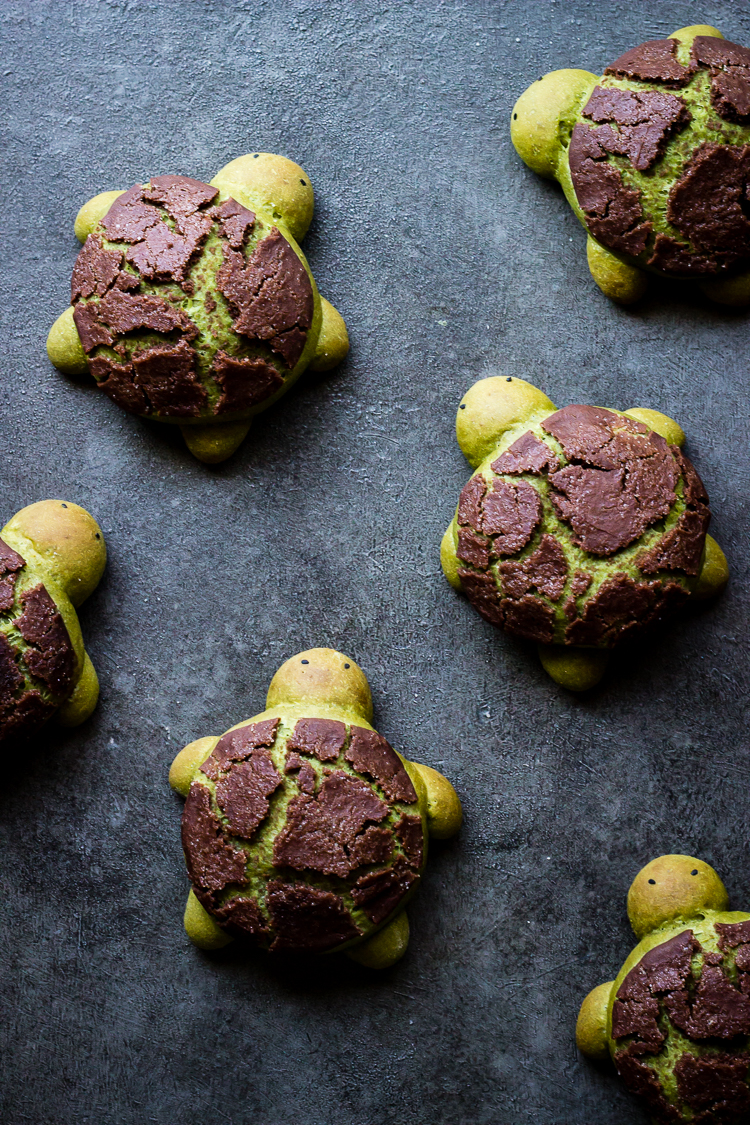
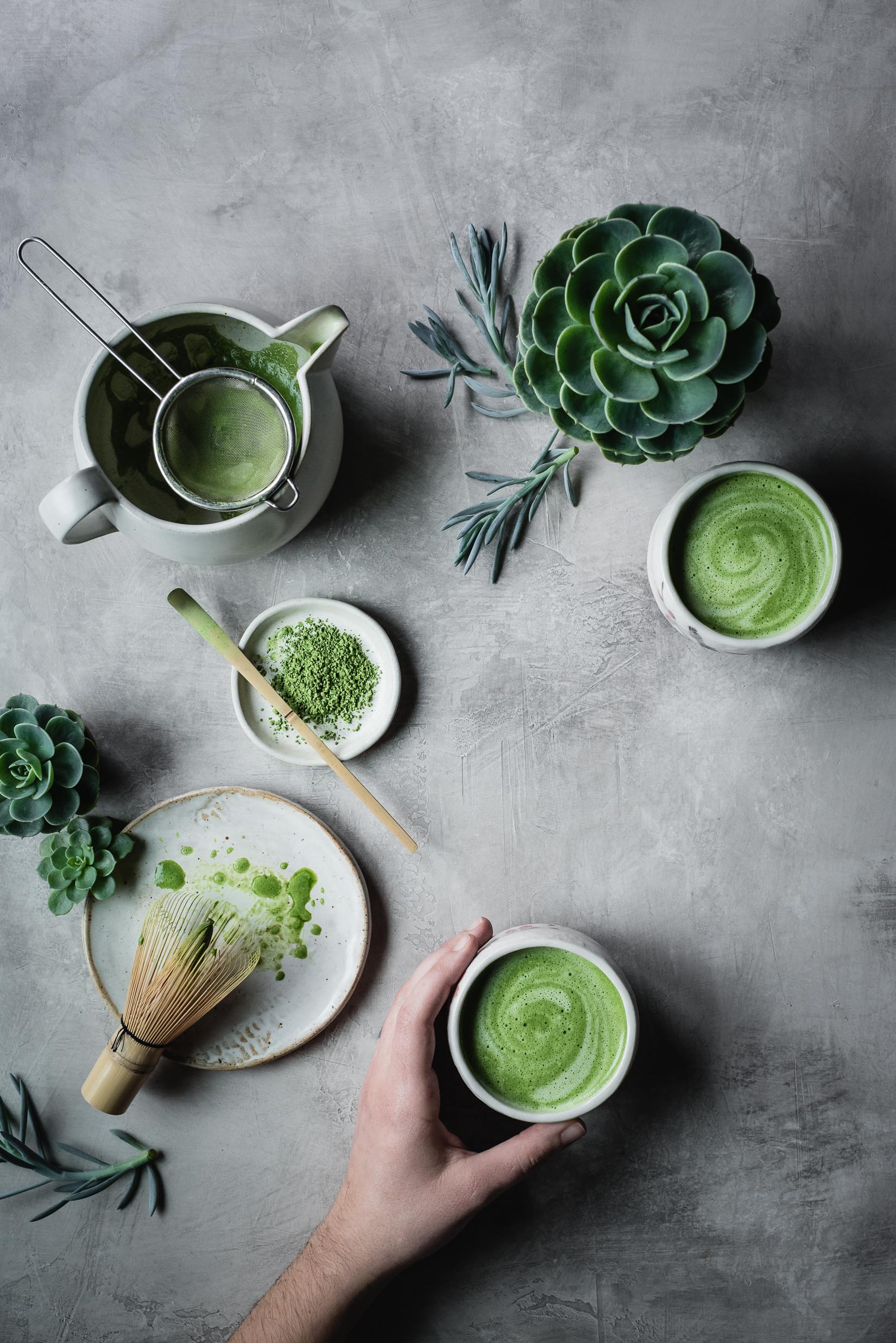

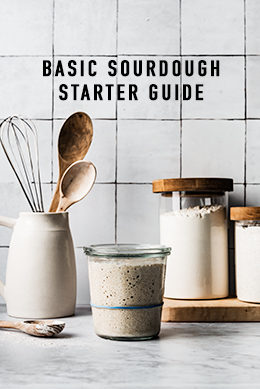
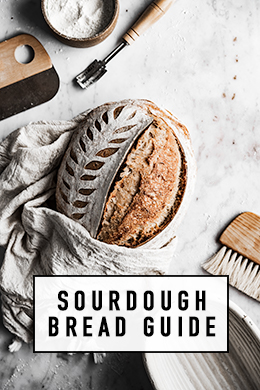






WOW!!! Great photos bella!!
my family and i LOVE all your matcha recipes, in fact, your IG feed and your stories is what inspired us to start the Encha matcha journey, THANK YOU!!!
OH, by the way, this blog post is THE single most comprehensive and accurately informative document on the enitre web. We searched high and low for insight into this powerful medicine, and, hands down, this by far is all inclusive where all the other content is lacking and leaving MUCH to still be sought after. thank you for your diligence in putting this AMAZING encyclopedia of information together in one post with all those STUNNING photos to go along with it!!!
Wow! Loved reading this. Been drinking matcha for 4 days now and I’m not going back 😂💚
Yay! That makes me so happy! Matcha for life! Lol!
Really enjoyed reading, great information! Do you have other, less expensive, matcha suggestions? I’m just getting started in the matcha world. Thinking if I really end up enjoying it, I can switch and appreciate Encha.
Hi Jo! I am happy you appreciated the content! I would recommend getting Encha mini-packs if you are looking to try out matcha before you commit to a month’s supply. The thing is, I really cannot recommend a less expensive matcha, because you really get what you pay for when it comes to quality matcha and the taste will be SO different with a cheaper brand. Encha’s price point is really great for the quality you are getting, there are much more expensive brands out there.
Hi what brand is that matcha bowl with the sieve and spout ? I’d love to buy it !
Ying
Hi Ying! The matcha bowl with spout is from Encha! You can order it online from their site: http://www.myencha.com
muy buen artículo.. pero cual tipo de matcha recomiendas mejor?? el de grado ceremonial o el latte matcha?
el latte matcha es mejor para beber con leche y el de grado ceremonial es mejor para beber con solamente agua
I recommend the latte grade matcha for drinking it daily with milk, but the ceremonial grade is our very favorite, it is just more costly, so it really depends on your budget
Great !!!
Thank you so much!
I’m a believer!! About order some now, can’t wait to give up coffee for good! Thank you Bella!
YAYAYAYAY! I am SO excited! I cannot wait to see how it transforms your life!
Thanks for the wonderful write-up. I want to make large quantities of matcha milk teas for a party. How far in advance can I prepare the matcha (hot water and whisk) before the quality degrades or goes bad?
Hi Marlon! I would say the best way to protect the matcha would be to prepare it with room temperature water. Which can easily be done by sifting the matcha, adding room temperature water, let it soak for a few minutes & then whisk per usual. Matcha will oxidize so it would be best to keep it in a tightly sealed container in the refrigerator until you are ready to serve for you party!
Thank you! Can’t wait to try it out.
You are so welcome! I am excited for you!
I have been using 1/2 tsp. in my morning smoothies. Do you feel this an adequate amount to receive health benefits and is adding it to cold almond milk degrading it?
I think 1/2 teaspoon every day is adequate! I typically enjoy 1 tsp, but you need to do whatever feels right for you! And using cold almond milk absolutely will not degrade the matcha…you only need to be concerned with hot liquids degrading the matcha!
Hi there…
I love your photos.. may i know if i can use them with your permission or if you would like a donation for using it. Please do let me know… would want to respect your rights…
Thanks
Alan
Hello Alan! How are you planning on using my photos?
I’ve been trying to bake matcha vegan cookies and for some reason it is turning brown even after setting the right temperature. Also after storing it in an air tight container overnight, the next day the cookies are black in colour. I’ve been using the best quality matcha – ceremonial grade matcha. If you don’t mind can you advise me where I am going wrong ? I am very keen to learn baking matcha cookies.
Hello Ritika! Without knowing more about the type of matcha cookie that you are trying to make (like what ingredients they include) it is hard for me to give you specific advice. But, I do have a matcha shortbread recipe here on my blog that stays nice and green before and after baking! Hopefully reviewing this recipe will help you in your matcha cookie recipe development: https://www.ful-filled.com/2015/12/21/matcha-shortbread-men/
I’ve been wondering if matcha loses any of its health benefits from heating. Is this why you suggest not using boiling water for lattes? If so, does baking with matcha mainly just contribute flavor?
Hello Autumn! Yes, the antioxidants, in particular, will get damaged at high temperatures. So you are correct in your judgment that baking with matcha is for flavor & coloring!
I have a 13 year old girl who recently decided that she loves matcha lattes (but cold). However, I’ve heard that it can be bad for younger kids. Is it alright for her to drink matcha on a daily basis?
I have never heard anything about matcha being bad for kids. It does have caffeine in it, but as I describe in this post, because of the unique attributes of matcha, its caffeine is absorbed much more slowly in comparison to coffee and soda for example. In my personal opinion, matcha has so many benefits, I believe it is a healthy drink for all ages! Perhaps you can just make sure she drinks it before 4pm each day, so that her body has time to metabolize the caffeine long before bedtime (I suggest this for all drinkers, adults, and kids alike)